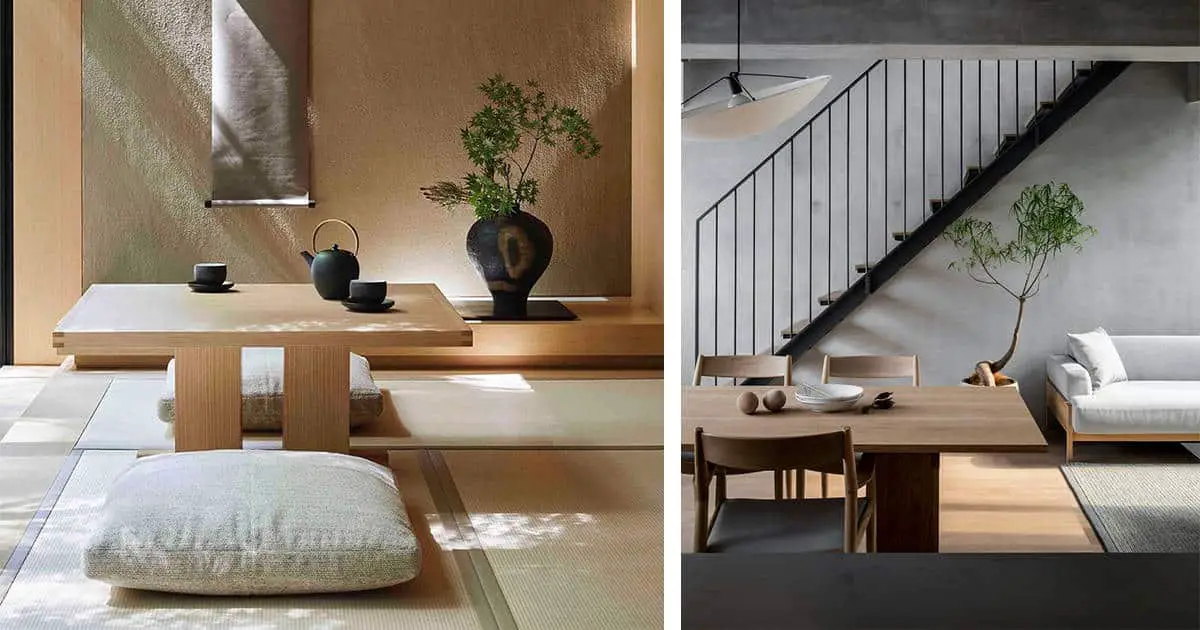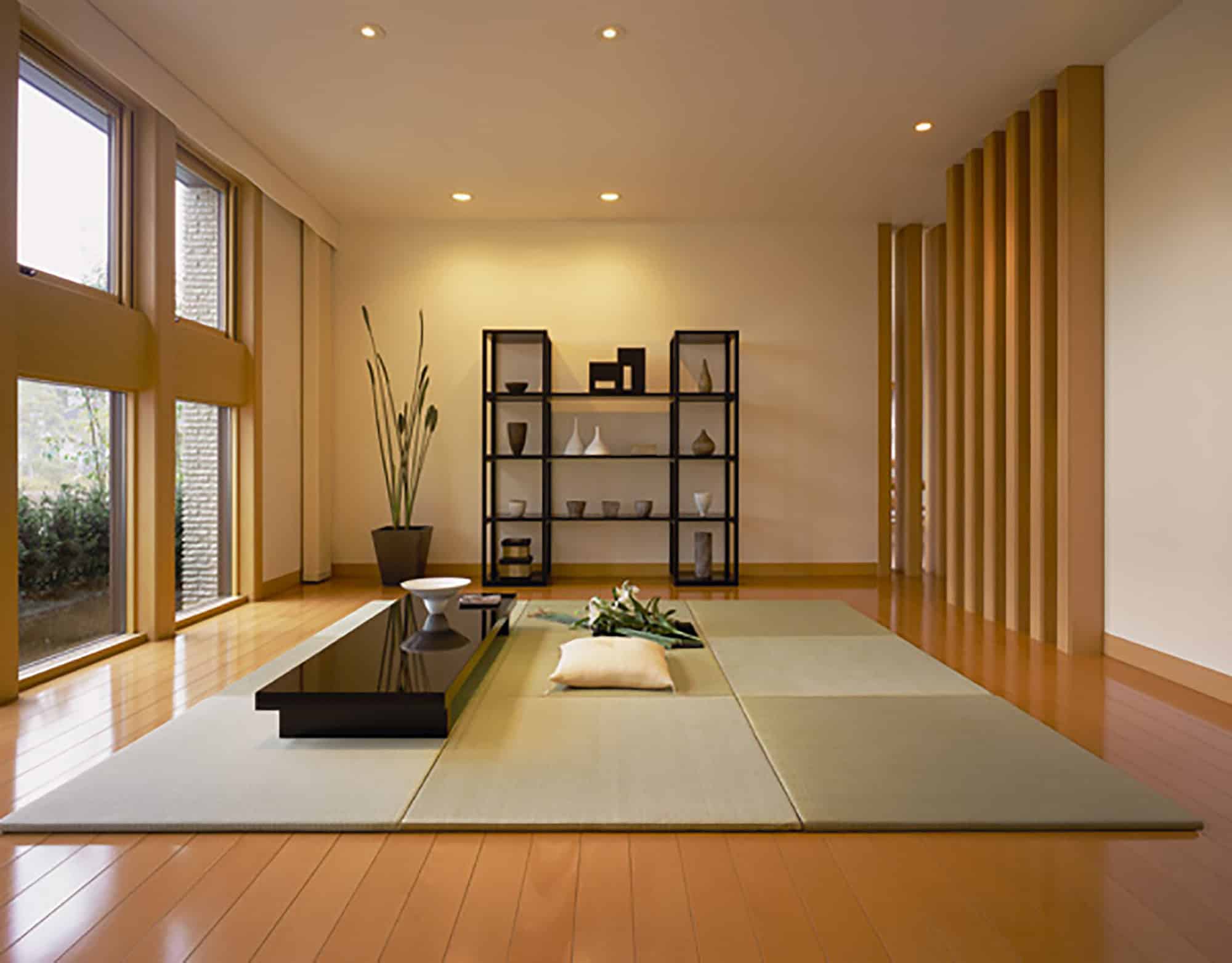Key Characteristics of Modern Japanese Interior Design

Modern Japanese interior design is a harmonious blend of traditional Japanese aesthetics and contemporary design principles. It emphasizes simplicity, natural materials, clean lines, and a deep connection to nature.
Traditional Japanese aesthetics, known as wabi-sabi, celebrates the beauty of imperfection and impermanence. This philosophy is reflected in the use of natural materials such as wood, stone, and bamboo, which are often left in their raw or unfinished state.
Modern Japanese interior design emphasizes simplicity, clean lines, and natural materials. However, for those seeking a more dramatic aesthetic, incorporating elements of black room decor can add a touch of mystery and sophistication. The deep, rich hues of black create a sense of intimacy and warmth, while the sharp contrasts enhance the minimalist lines and textures of Japanese design.
Openness and Flow
Modern Japanese interiors are characterized by an open and flowing layout. Rooms are often connected by sliding doors or screens, creating a sense of spaciousness and flexibility. The use of natural light is also essential, with large windows and skylights allowing ample sunlight to flood the space.
Natural Materials
Natural materials play a central role in modern Japanese interior design. Wood is a particularly popular choice, used for flooring, furniture, and architectural elements. Other natural materials, such as stone, bamboo, and paper, are also commonly used.
Modern Japanese interior design embraces simplicity and natural elements, creating a serene and harmonious atmosphere. This minimalist aesthetic extends to the table, where clean lines and organic materials dominate. To bring a touch of spring into your Japanese-inspired dining space, consider incorporating spring table decor such as delicate floral arrangements, fresh greenery, or pastel-colored linens.
The contrast between the stark simplicity of the Japanese design and the vibrant colors of spring will create a visually stunning and inviting space.
Clean Lines
Clean lines and simple forms are essential to modern Japanese design. Furniture is often low-slung and minimalist, with an emphasis on functionality and comfort. Architectural elements, such as walls and ceilings, are often kept simple and unadorned.
Connection to Nature
Modern Japanese interiors often incorporate elements of nature, such as plants, water features, and natural light. This connection to nature creates a sense of tranquility and well-being.
Elements of Modern Japanese Interior Design

Modern Japanese interior design emphasizes simplicity, functionality, and natural elements. Its distinct aesthetic combines traditional Japanese principles with contemporary design elements, creating harmonious and inviting spaces.
Several key elements define modern Japanese interior design, each contributing to its unique and cohesive style.
Furniture
- Low-profile furniture: Tatami mats and low tables create a sense of openness and connection with the floor, promoting relaxation and comfort.
- Clean lines and geometric shapes: Furniture pieces often feature simple lines and geometric shapes, emphasizing functionality and a minimalist aesthetic.
- Natural materials: Wood, bamboo, and paper are commonly used materials, adding warmth and a connection to nature.
Lighting
- Natural light: Large windows and sliding doors maximize natural light, creating a bright and airy atmosphere.
- Paper lanterns and shoji screens: These traditional elements diffuse light, creating a soft and ambient glow.
- Indirect lighting: Hidden light sources and recessed lighting provide subtle illumination, enhancing the sense of serenity.
Materials
- Wood: Natural wood is a prominent material, adding warmth and texture to the space.
- Bamboo: This sustainable material is used for flooring, furniture, and decorative accents, creating a sense of tranquility.
- Paper: Shoji screens and washi paper add a delicate and airy element, allowing for natural light to filter through.
Color Schemes
- Neutral tones: White, beige, and gray create a calming and minimalist backdrop.
- Earth tones: Greens, browns, and blues bring a sense of nature indoors, creating a serene atmosphere.
- Pops of color: Bright colors, such as red or yellow, can be used as accents to add energy and vitality to the space.
These elements work together harmoniously to create a modern Japanese interior design that is both aesthetically pleasing and functional. The emphasis on natural materials, clean lines, and subtle lighting creates a calming and inviting atmosphere, promoting relaxation and well-being.
Design Principles in Modern Japanese Interiors

The guiding principles of modern Japanese interior design are rooted in the traditional Japanese aesthetic of simplicity, functionality, and a deep connection to nature. The concept of “wabi-sabi” plays a pivotal role, emphasizing the beauty of imperfection and the passage of time. This philosophy influences the choice of materials, textures, and finishes, embracing natural elements and celebrating their unique characteristics.
Wabi-Sabi, Modern japanese interior design
Wabi-sabi is a Japanese aesthetic philosophy that finds beauty in imperfection, impermanence, and simplicity. It embraces the natural aging process and celebrates the beauty of things that are not perfect or pristine. In modern Japanese interiors, wabi-sabi is expressed through the use of natural materials such as wood, stone, and paper, as well as the incorporation of weathered or aged objects.
Simplicity and Functionality
Simplicity and functionality are key principles in modern Japanese design. Interiors are designed to be uncluttered and efficient, with a focus on clean lines and open spaces. Furniture is often simple and functional, with an emphasis on natural materials and traditional Japanese joinery techniques.
Connection to Nature
The connection to nature is a fundamental aspect of Japanese culture, and this is reflected in modern Japanese interior design. Natural elements such as wood, stone, and plants are often incorporated into interiors, creating a sense of tranquility and harmony with the outside world. Large windows and sliding doors allow for natural light to flood the space, further enhancing the connection to nature.